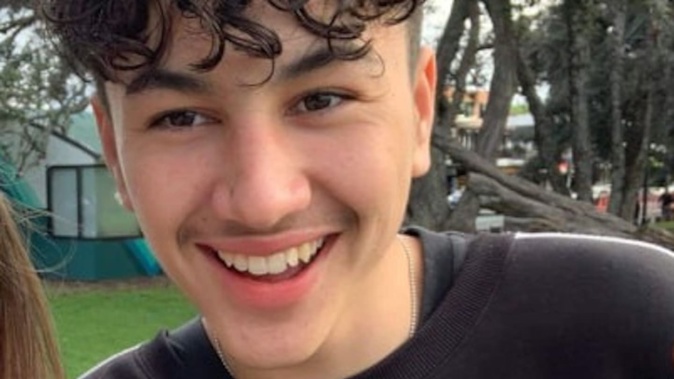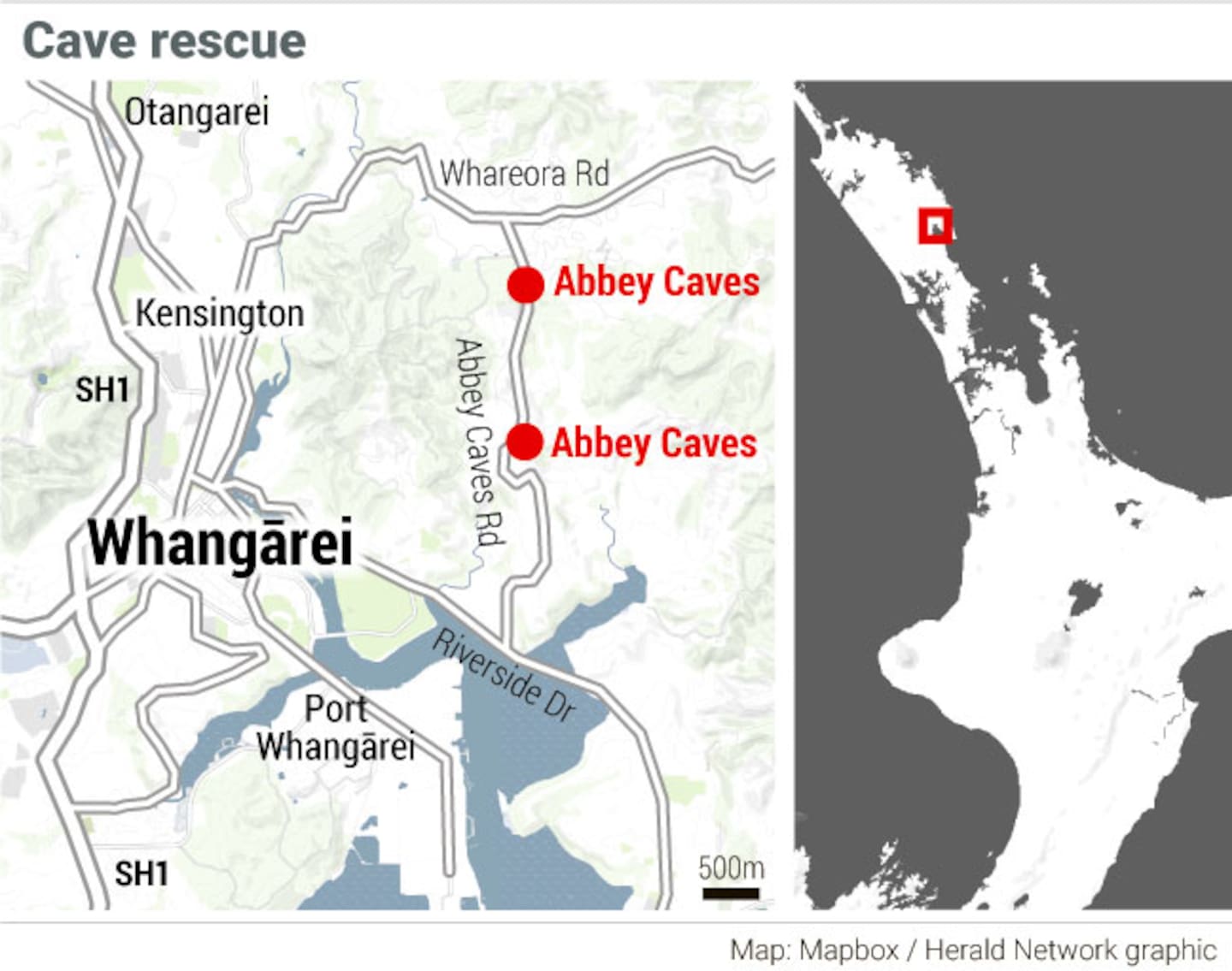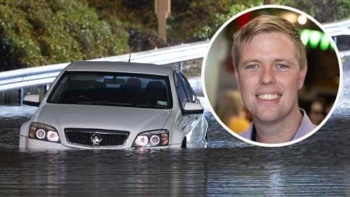

As a cave filled with rising floodwaters in a matter of minutes, 17 students found themselves in a fight for survival as they were swept into a swirling current while desperately trying to escape.
Their trip to Abbey Caves was no longer a school outing – it was a battle between life and death.
Two weeks ago, the Whangārei Boys’ High School board of trustees was sentenced for its failures in the organisation of the school trip.
Today a detailed summary of facts explaining exactly what happened during the terrifying expedition was released to NZME by the courts.
At the emotional sentencing in the Whangārei District Court, Judge Greg Davis commented that reading the summary of facts was harrowing and brought tears to his eyes.
“This is hard stuff for any person to hear,” he said to the court filled with the Petera whānau, school employees and surviving students.
At the time of the event, the school had an Education Outside the Classroom (EOTC) policy that was in the process of being reviewed.
According to the summary of facts the final approval for an activity such as caving rested with the head of PE and health and on December 9, 2022, the proposal was approved.
Outdoor education classes of rock climbing were scheduled for May 8-12, 2023, and caving for July 24-28, 2023, but on May 1 a staff member sought approval to swap the rock climbing to caving as they were concerned about the risk of slippery rocks in forecasted rain.
The request was approved three days later and parents were notified of the change.
Despite a staff member checking the weather forecast and noting a thunderstorm warning, they proceeded to take the first group out on May 8. The group explored Organ, Middle and Ivy caves without incident.

The trip was originally meant to be rock climbing but was changed a week prior.
At 8.42pm that evening, Petera’s mother, Alicia Toki, emailed the school to ask if the caving trip was still going ahead and received a reply about 10pm.
“Hi Alicia, Yes, it’s still on. We are monitoring the weather situation closely. It looks like the heavy rain will hit around 3pm. The students will be out of the Caves by 1:30. I understand that [redacted] explained this all to the students in class this afternoon. I believe that they are also meeting up at 8am, rather than 8:30. Safer to start early and finish early. Cheers,” the message said from an unnamed staff member.
“How wrong that assessment was”
On the morning of May 9, a teacher in charge reviewed the rain radar and noted significant bands of rain moving southward from Kaitāia, yet the trip was still deemed safe to proceed. He did not check any rain warning for Whangārei and underestimated the severity and timing of the weather event.
“How wrong that assessment was,” Judge Davis said at sentencing.
Expert meteorologist Mike Green told WorkSafe Whangārei had experienced 2.5 times higher rainfall than the average for April and a severe weather warning was in place.
“All severe weather warnings issued by MetService, including for thunderstorms, were consistent around the risk of significant rain for Tuesday 9 May for all of Northland, including Whangārei ... Public warning and forecasts available leading up to the Tuesday 9 May event were accurate with what occurred,” Green said.
About 8am, the students were issued with caving overalls, helmets, headlamps and gumboots and advised to stick to the upper sections of Organ Cave.
One sign at the carpark of Abbey Caves warns people to check previous weeks’ rainfall. Another directly outside Organ Cave says: “You enter these caves entirely at your own risk. The caves have not been assessed as being safe to enter. It is recommended that only experienced cavers enter underground and that emergency plans are in place first.”
The rahui sign and flowers at the entrance to the Abbey Caves track. Photo / Michael Cunningham
Led by one teacher and an outdoor education contractor the 17 students entered Organ Cave between 9.30am and 9.45am.
Their phones were left in the car because of reception issues, leaving them without any form of communication.
Local arborists in the area told WorkSafe that about 9.30am a phenomenal amount of rain fell, so hard they could not see trees 50m away.
The caving activity followed the usual route along the creek bed to the juncture 150m into the cave where it then splits into two passages, one following the creek bed and the other to an upper passage.
The water levels were described as being knee to waist high at its deepest point flowing slowly with a hazy brown colour.
“I thought it was safe”
The group ventured into the upper passage, where glow worms were, and sat in silence for about five minutes with their headlamps off.
They then moved further along looked at graffiti on walls and began to return along the upper passage and down to the juncture.
One of the teachers became concerned the water levels were beginning to rise and decided they needed to exit the cave.
“I thought it was safe to walk out and that it was better to do that than stay at the upper passage. While the upper passage was dry, if we had stayed, and the water was to continue rising, we would have had to wait for the water to subside, and I did not know how long that would be. We had no ability to communicate as there is no cellphone reception, and I was concerned that if we had to wait for a long time, we could be at risk of hypothermia. The better and safer option was to exit.”
At this point, it became apparent the staff had no back-up plan and had not had any discussions with anyone about a safe place inside the cave - the only safe place was outside.
“I decided there was too much water and that we should get out of the cave as soon as possible,” one of the teachers told WorkSafe.
Abbey Caves, pictured, is a short system with three small caves in a line which cavers considerrelatively easy in fine weather. Image was not taken on the day and does not show any students. Photo / PhotoPhill
The interaction between the two teachers lasted less than 20 seconds before they advised the students to get in the water and swim out.
“But in the cave it wasn’t much swimming. We were just getting dragged by the water,” one of the students said.
By now, the water was too deep to touch the bottom and it was too late to go back as water levels swiftly rose.
Students were instructed to link arms but many were being dragged down by their overalls and gumboots or other students. Students frantically attempted to kick their gumboots off and were unable to stay linked.
The water funnelled through two passages around a large rock, creating a “sieve” effect where it became nearly impossible for anyone caught in its path to escape.
“I look back and he was gone”
“The power of the water was trying to ‘suck’ people down under the surface and into this hole,” one of the teachers told WorkSafe.
Students reported those who went to the left of the rock managed to exit the cave relatively easily but those who went to the right ran into difficulties.
“We started getting sucked down into these holes. I can’t really picture it because we couldn’t see the ground,” one student said.
“And um Karnin was getting … Karnin’s foot, feet got trapped in it and was starting to get sucked down and [redacted] was getting sucked down as well. But [redacted] was holding Karnin like that, and with his knee like that.
“And then I look away for about, I can’t really remember, it was a blur, but I look [SIC] away and then I look [SIC] back and he was gone.”
One person placed their body in front of the sieve and students reported, that if that had not been done, many other students would have drowned. Another person was also reportedly submerged underwater for long periods trying to help students exit above him.
Emergency services were unable to enter the caves until 7pm due to the severity of the weather. Photo / Michael Cunningham
When students who escaped raced to find a phone at the entrance they could not find one and found the arborists who called 111 at 10.35am.
Emergency services were unable to access the caves until 7pm when the water dropped and located Petera with his foot trapped between rocks.
Petera’s mother told the sentencing court when her son was brought up, six moreporks began calling.
“It was his spirit being released, it was a tohu (sign),” she said.
The tragedy revealed several failings of the school including failing to sufficiently assess the weather warnings in place, lack of emergency planning, inadequate supervision, lack of effective communication and inadequate risk management.
As part of the event proposal, a Risk Assessment Method Statement (RAMS) was completed which identified heavy rainfall as a hazard with a high-risk rating. It noted if there were any heavy rain warnings that the trip should be cancelled.
“The RAMS was submitted months before the activity and was not considered on the day of the activity, or before the activity in the face of the rain that had already fallen in Whangārei and which was immediately forecast.
“There was inadequate emergency planning, which failed toidentify the critical risk of the possibility of rising water trapping students. This in turn saw the teacher and independent contractor who was assisting not being equipped to fully consider their options, when faced with an unfolding emergency,” WorkSafe said.
Petera’s parents, Alicia Toki and Andre Petera, told the court they want the caves closed permanently with access only for guided tours and encouraged all workplaces to consider climate change.
“We would like workplaces to think of the effect of climate extremes when they do health and safety risk assessments.
“If the safety of work relies on weather forecast, you need to factor in a much larger margin of error.”
The school board of trustees was ordered to pay more than $500,000 in reparation to the victims.
Andre Petera, Alicia Toki and son Jordan, with a photgraph of Karnin, known as Tino, who died in the Abbey Caves. Photo / Jodi Bryant
Take your Radio, Podcasts and Music with you









